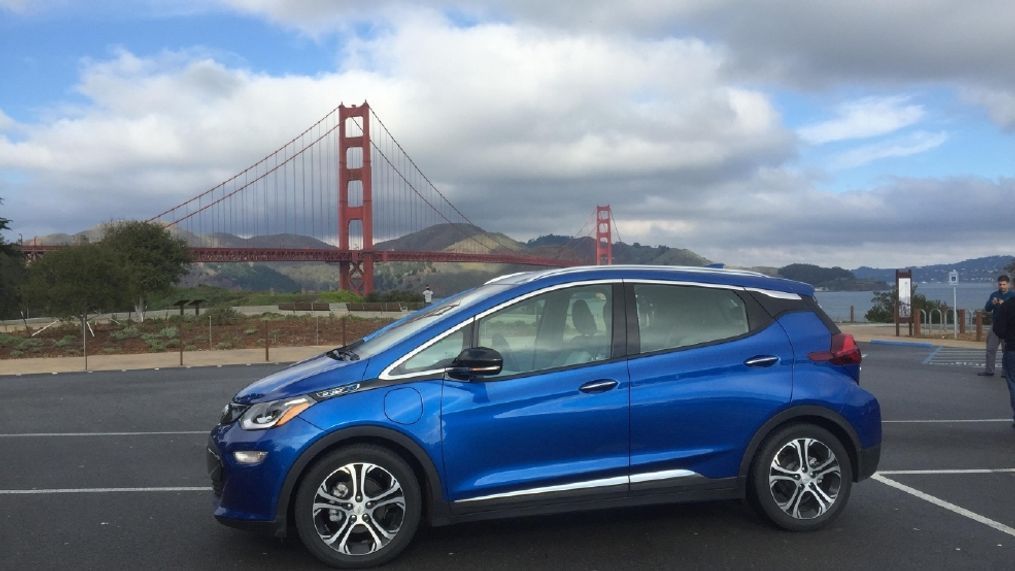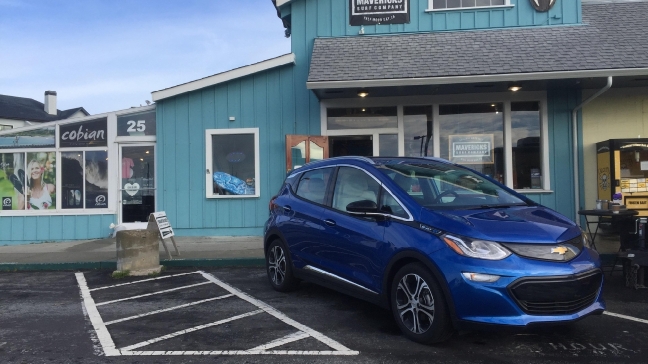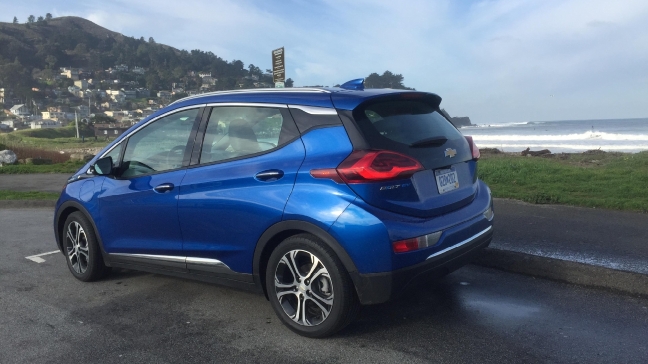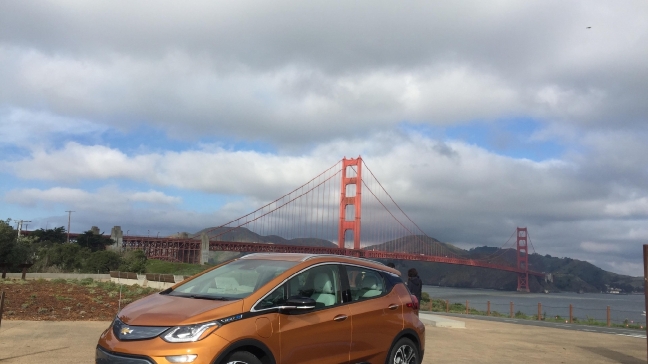3 weird things on 2017 Chevrolet Bolt EV
SAN FRANCISCO, Calif. — One of the huge selling points for the all-new 2017 Chevrolet Bolt EV is it’s an electric car that can be driven like a gasoline vehicle. With an estimated 238 miles of range, you probably won’t need to charge every day if you didn’t want to. And though road trips might still be a bit out of reach because of lack of infrastructure, range anxiety should be a thing of the past.
During a recent press preview, I had the chance to experience an all-EV drive through trafficked city streets and steep mountain passes, and I discovered three things that might be a bit weird when you compare the Bolt EV to other cars.
You can drive without using the brake pedal
This one is the weirdest. And, mentally, it takes some getting used to. But it’s totally true. One-pedal driving is possible through a new regenerative braking system that enables the vehicle to slow down just by taking your foot off the accelerator. You need to have the vehicle in “Low” mode or use the “Regen on Demand” paddle on the steering wheel, but as you decrease pressure on the accelerator, the car slows down – just like you’re hitting the brakes.
Several times during the drive, my partner kept asking, are you using the brakes now? How about now? No, and no. In fact, the only time I used the brake pedal was in an emergency stop situation and while coming to a stop sign on a hill. As you get used to the rhythm of the regenerative braking, it’s easy to glide to a complete stop at traffic light or follow the flow of stop-and-go traffic. All without hitting the brake.
That mirror isn’t really a mirror
If you upgrade to the Premier trim of the Bolt EV, you’ll see something that looks like a rearview mirror and acts like a rearview mirror. But it’s not really a rearview mirror; it’s a rear camera mirror. So it can operate as a reflective surface, showing you what you’re used to seeing when you need to check your six. However, with the flip of a switch it turns into a digital display that removes any visual obstacles that might be in the cargo area or the back seat. You basically get the same view; it’s just clearer and less distracting.
I used the digital display for a while during the drive, and initially it was weird not to see headrests in the “mirror.” But eventually, I liked the clarity and unobstructed view it provided. I switched it back to a mirror only because the BMW tailgating me in traffic made me nervous.
Navigation isn’t even an option
With standard Apple CarPlay and Android Auto, Chevrolet has forgone the inclusion of a navigation option in the Bolt EV. It makes sense since people are more likely to use their phones for navigation these days anyway. The caveat here is that the Apple maps kind of stink, so the Android folks are totally getting the better end of the deal.
We played around with this a bit, and we had problems getting the phone to cooperate with the car – which was more of a phone problem than a car problem. If you don’t have a smartphone or if you hate Apple maps like I do, you can always opt for an OnStar Directions and Connections package, which will send navigation directions directly to the car. But that will cost you about $35 per month. Personally, I’d just stick with Waze on my phone, which isn’t an available app on either Auto or CarPlay.
These are just three of the more interesting and, yes, weird things I discovered while driving the Bolt EV. Stay tuned for a full first-look review for all the nitty gritty on this neat new car.
_______________________________________
To find your next new, used or certified vehicle visit www.driveautonow.com today. Local car shopping made easy!




